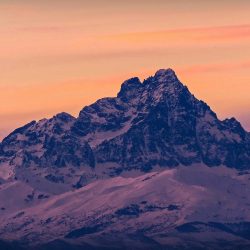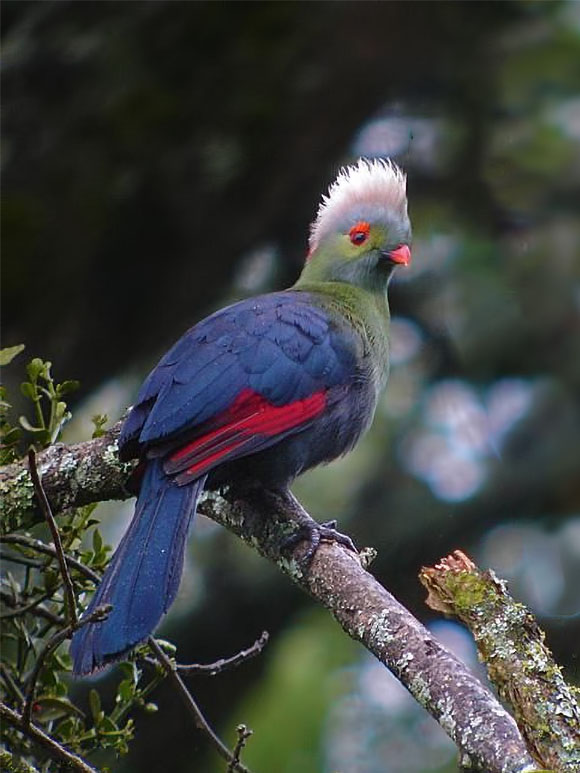- Overview
- Trip Outline
- Trip Includes
- Trip Excludes
- Gallery
- Booking
- FAQ
Day 1: Sydney to Newcastle area.
We’ll spend the full day birding around the Newcastle area, which boasts a rich variety of habitats, ranging from the coastal mangroves (with Rufous Fantail, Striated and Brown Thornbill, Golden Whistler and the localized Mangrove Gerygone), rainforests (with species such as Australian Bushturkey, Brown Cuckoo-dove, Bar-shouldered Pigeon, Satin Bowerbird, Wonga Pigeon, White-headed Pigeon, Green Catbird and more) and tall eucalypt woodlands (with a range of Honeyeater species), Figbird, Wompoo Pigeon, Fan-tailed Cuckoo, Eastern Whipbird, Satin Bowerbird, White-throated Treecreeper and a chance of Powerful Owl.
Overnight: motel in Newcastle (en-suite rooms; meals:B, L, D).
Day 2: Newcastle area.
Today we head further afield, to Gloucester Tops National Park, where woodlands interspersed with streams cover the slopes of the escarpment. We’ll spend most of the day exploring this area where we have a good chance of finding Bassian and maybe even Russet-tailed Thrush, Logrunner, King Parrot, Topknot Pigeon, White-browed & Yellow-throated Scrubwren, Eastern Yellow Robin, Brown Gerygone, Black-faced Monarch, Lewin’s Honeyeater and a chance of Superb Lyrebird. Along the way we often come across roosting Red-headed Fruit-bats and may be lucky enough to see a stately Black-necked Stork.
Overnight: motel in Newcastle (en-suite rooms; meals: B, L, D).
Day 3: Newcastle to Capertee Valley.
We head inland for the stunning birding region of the Capertee Valley. This remote valley is situated between two escarpments and harbours a rich birdlife: in this region alone there have been over 240 species recorded including the endangered Regent Honeyeater. We will also be looking for Wonga Pigeon, Peaceful Dove, Gang-gang Cockatoo, Little Lorikeet, Red-browed Treecreeper, Eastern Whipbird, Black-chinned Honeyeater, Striped Honeyeater, Scarlet Honeyeater, Plum-headed Finch, Diamond Firetail, Zebra Finch, Double-barred Finch, Mistletoebird, Flame Robin, Hooded Robin, Grey-crowned Babbler, White-throated Gerygone, Bell Miner, Cicadabird, Speckled Warbler, Dusky Woodswallow, Rainbow Bee-eater, Sacred Kingfisher, Crested Shrike-tit, Restless Flycatcher, Western Gerygone, Painted Button-quail, Yellow-rumped Thornbill Buff-rumped Thornbill.
Overnight: motel near Capertee (en-suite rooms; meals included: B, L, D).
Day 4: Capertee Valley and the Blue Mountains.
From our motel we again head to the Capertee Valley to make the most of this amazing location, to pick up any species still needed after yesterday. In the afternoon we drive south to the scenic sandstone rock formations and expansive eucalypt woodlands of the Blue Mountains to search for local specialties like Glossy-black Cockatoo, Rock Warbler (Origma) and Pilotbird.
Overnight: motel in Katoomba (en-suite rooms; meals included: B, L, D).
Day 5: Blue Mountains to South Coast NSW.
We commence the day continuing birding around the Blue Mountains then head to the Royal National Park South of Sydney. Here we hope to find Superb Lyrebird, Satin Bowerbird, Green Catbird, Eastern Whipbird, Yellow-throated Scrubwren, White-browed Scrubwren, Yellow-faced Honeyeater, Yellow-tufted Honeyeater, Eastern Yellow Robin, King Parrot, Azure Kingfisher, Rufous
Fantail and White-throated Treecreeper.
In the afternoon we drive further south looking for coastal birds including Pacific Gull, White-bellied Sea-eagle, White-headed Pigeon, and the endangered Hooded Plover. Tonight we’ve planned to do some night birding, searching for Boobook and Powerful Owl, and an assortment of nocturnal mammals.
Overnight: motel in Jamberoo (en-suite rooms; meals included: B, L, D).
Day 6: Jamberoo to Chiltern.
An early morning walk finds us searching the low heath for the rarely seen Eastern Ground Parrot. Other good species of this area include Eastern Bristlebird, Beautiful Firetail, Southern Emu-wren, Tawny-crowned and White-eared Honeyeater.
After a late breakfast, we’ll head east, driving past the national capital, Canberra to our destination: Chiltern National Park in Victoria. This vast expanse of semi-arid woodland harbours some pretty unique species which will be the focus of our search, including Regent Honeyeater and Turquoise Parrot. Other birds encountered include Yellow-tufted, Painted, and Fuscous Honeyeater.
Overnight motel in Chiltern (en-suite rooms; meals included: B, L, D).
Day 7: Chiltern to Deniliquin.
We’ll spend the morning birding around the various habitats within the Chiltern area. In addition to the species mentioned above, we will target Spotted Quail-thrush, Satin and Leaden Flycatcher. In the afternoon we drive west and visit various red-gum and box-ironbark woodland sites along the way, looking for birds like Superb Parrot, Bell Miner, Noisy Friarbird, Blue-faced, Tawny-crowned, Purple-gaped, White-eared, Painted, Black-chinned, Fuscous & Yellow-tufted, Yellow-plumed &
White-fronted Honeyeaters, Inland Thornbill, Restless Flycatcher, Musk, Little & Purple-crowned Lorikeets, and many more. At the end of the afternoon, we’ll arrive in Deniliquin, situated on the Murrumbidgee river. We’ll check into our lodge and set off again for further birding and after dark, spotlighting for Plains-Wanderer. The species is in a family of its own and is almost extinct. The birds are rarely seen during the day and therefore the evening will be spent searching for them using spotlights.
Other species targeted today include Australian Bittern and Painted Snipe (both depend on the amount of water around) plus other good species like Superb Parrot, Painted Buttonquail, and depending on seasonal conditions Pied or Black Honeyeater, Black Falcon, Australian Spotted Crake etc.
Overnight: motel in Deniliquin (en-suite room; meals included: B, L, D).
Day 8: Deniliquin to Healesville.
We’ll spend the morning birding around the various habitats within the Deniliquin district. Species we will look for include Emu, Little Bittern, Black Falcon, Superb Parrot, Grey-crowned Babbler, Western Gerygone, Long-billed Corella, Scarlet, Red-capped & Hooded Robin, Pallid Cuckoo, Diamond Firetail, Southern Whiteface, Jacky Winter, Blue Bonnet, Singing Honeyeater and Yellow Rosella. We depart Deniliquin early afternoon to visit a wetland along the way, with good chances of Australian Bittern and Little Bittern. Heading south we’ll spend the rest of the day birding the moist hill forests around Healesville where we hope to pick up Superb Lyrebird, Pilotbird, Red-browed & White-throated Treecreepers, Large-billed & White-browed Scrub-wrens, Eastern Whipbird, Rufous Fantail, Satin Flycatcher, Golden Whistler, Lewin’s Honeyeater, Pied & Grey Currawongs, Brush
Cuckoo, Shining Bronze-cuckoo, Brown & Striated Thornbill and Silvereye.
Overnight: Healesville Sanctuary House, scenically located on the edge of the dense forests (en-suite motel room; meals
included: B, L, D).
Day 9. Healesville to Werribee.
A couple of hours in the morning will be spent picking up any forest birds we still need, then we’ll then drive for a couple of hours’ to the township of Werribee, gateway to our destination for the afternoon: the Western Treatment Plant. This is one of Australia’s premier waterbird sites, looking for Sharp-tailed Sandpiper, Red-necked Stint, Black-tailed Godwit, Red Knot, Red-capped Plover, Hoary-headed Grebe, Australasian Gannet, Pied, Little Pied, Great & Little Black Cormorants, White-winged Black-Tern, Fairy Tern, Pink-eared, Blue-billed and Musk Duck, Australian Shelduck, Cape Barren Goose, Red-necked Avocet, Australian Spotted Crake, Buff-banded Rail, Blue-winged Parrot, Striated Fieldwren, Horsfield’s Bushlark, Horsfield’s Bronze-cuckoo, Golden-headed Cisticola, Swamp Harrier and Black Falcon. At the end of the day we’ll take a short drive to Melbourne.
Overnight Tullamarine Best Western Motel (en-suite motel room; meals included: B, L, D).
Day 10: Melbourne to Cairns.
On arrival in Cairns, north Queensland, we will look for mangrove species along the Jack Barnes Mangrove Boardwalk on the way to the hotel. After we check in we will walk the Cairns Esplanade for waders. Large numbers of waders include Beach Thick-knee, Whimbrel, Grey-tailed Tattler, Lesser and Greater Sand-plovers and Grey Plover. At the mangroves at the north end of the walk we look for Shining Flycatcher, Mangrove Robin, Large-billed Gerygone, Collared Kingfisher, Striated Heron, Varied Honeyeater and Olive-backed Sunbird. We should also see Rainbow and Scaly-breasted Lorikeet, Pied Imperial-pigeon, Australian Swiftlet, Spangled Drongo, White-breasted Woodswallow and Australasian Figbird.
We’ll visit Centenary Lakes and Cairns Botanical Gardens for Black Butcherbird, Hornbill Friarbird, Rainbow Bee-eater, Yellow-bellied Sunbird, Green Oriole, waterbirds, a wide range of honeyeaters and Papuan Frogmouth. Freshwater Lake supports a range of interesting species, including Little Kingfisher (check low hanging twigs and branches in the more shaded area of the lake), Nankeen NightHeron, Magpie Goose, Wandering Whistling-Duck, Radjah Shelduck, Comb-crested Jacana and Australasian Darter. A wide range of honeyeaters are found in the gardens, including Brown-backed, Dusky, Yellow, Graceful, Yellow-spotted and White-throated Honeyeater. Other birds in the gardens include Blue-winged Kookaburra, Bush Stone-curlew, Metallic Starling, Yellow Oriole, Olive-backed Sunbird, Little Bronze-Cuckoo, White-bellied Cuckoo-shrike, Cicadabird and Varied Triller.
Overnight: Acacia Court Hotel, Cairns. (en-suite hotel room; meals included: B, L, D).
Day 11: North of Cairns to Yungaburra.
This morning we will either visit the Cairns Esplanade or the Botanical gardens again, depending on what we saw yesterday. Next stop will be Newell Beach, one of the best sites in Australia to see swallows and swifts, particularly from late September to early March. Barn Swallows occur annually.
On the beach near the mouth of the Mossman River, we will look for Greater and Lesser Sand Plover (summer), Bar-tailed Godwit, Grey-tailed Tattler, Common Sandpiper, Great Knot, Whimbrel, Eastern Curlew and Australian Pied Oystercatcher, and terns such as Little, Crested and Lesser Crested. Beach Stone-curlew are occasionally seen here, more-so on the south side. We’ll visit one of Tropical North Queensland’s best sites for Cassowary: Etty Bay. Southern Cassowaries are often seen emerging from the forest onto the beach here. We’ll then head to the Nerada Teahouse, a tea plantation surrounded by lush trees in which lives the unique Lumholtz Tree Kangaroo. Having spotted these amazing creatures we’ll head to nearby Yungaburra where further interesting mammals await us in the form of Striped Possum and the Platypus: one of only two animals in the Monotreme order: mammals that lay eggs.
In the evening, we will visit the Mt Hypipamee Crater National Park, an ancient volcano crater filled with water and surrounded by rainforest. There is a chance of Golden Bowerbird here, particularly in fruiting trees, as well as Southern Cassowary (uncommon, but sometimes regular), Australian Brush-turkey, Tooth-billed Bowerbird, Spotted Catbird, Victoria’s Riflebird, Lewin’s and Bridled Honeyeater and Grey-headed Robin. Look along the start of the Crater Track (800 m) for Fernwren, Emerald Dove, Chowchilla, Atherton and Yellow-throated Scrub-wren, Mountain Thornbill, Brown Gerygone and Pale-yellow Robin. We finish the day standing on the ridge of the crater to watch the Brolga and Sarus Cranes come in to roost – one spectacular sight!
Overnight: Chambers Wildlife Lodge, Yungaburra. (en-suite room; meals included: B, L, D).
Day 12: Atherton Tablelands.
Today we’ll explore the Atherton Tablelands and commence with a visit to the spectacular Curtain Fig Tree. Walking slowly around this famous tree, or simply sit on one of the seats surrounding the tree, and look up. Around the tree, there are regular sightings of Double-eyed Fig-Parrot, Wompoo Fruit-Dove, Spotted Catbird, White-throated (Little) Treecreeper, Lewin’s and Macleay’s Honeyeater, Large-billed Scrub-wren, Mountain Thornbill, Brown Gerygone, Eastern Whipbird, Little and Bower’s
Shrike-thrush, Black-faced, Spectacled and Pied Monarch, Yellow-breasted Boatbill (usually in the upper canopy), Victoria’s Riflebird, Pale-yellow and Grey-headed Robin and Metallic Starling.
From Yungaburra we head to Big Mitchell Creek. Stop briefly at Big Mitchell Creek for rare White-browed Robin. The gallery forest along the Big Mitchell Creek also supports Black-throated Finch (also in adjacent woodland with seeding grasses), Northern Fantail, Lemon-bellied Flycatcher, Pale-headed Rosella, and Pied Butcherbird. We drive along the Lake Mitchell causeway, a good place for Black-necked Stork, Black-winged Stilt, Comb-crested Jacana, Australasian Grebe, Glossy Ibis, Royal Spoonbill, Pied Heron, and waterfowl such as Wandering Whistling-Duck, Grey Teal, Hardhead, Radjah Shelduck (uncommon), Green and Cotton Pygmy-Goose and Magpie Goose. We then stop at Mareeba Wetlands for many waterbirds. At the centre of the Mareeba Tropical Savannah and Wetland Reserve (2000 ha) is a series of 12 inter-connected lagoons, creeks and channels that
attract significant numbers of waterbirds. Waterbirds at Mareeba Wetlands include Sarus Crane and Brolga, Cotton and Green Pygmy-Goose, Wandering Whistling- Duck, Black-necked Stork, Glossy Ibis, White-browed Crake, Comb-crested Jacana and, in summer, shorebirds such as Marsh Sandpiper, Black-tailed Godwit, and Latham’s Snipe.
If there is time, visit Lake Eacham and Lake Barrine in Crater Lakes National Park, two volcanically formed lakes, both good for waterbirds such as Buff-banded Rail, Red-necked Crake and Azure Kingfisher, and species more typical of open water on the lake include Hardhead, Grey Teal, Pacific Black Duck, Wandering Whistling-Duck and Australasian and Great Crested Grebe, as well as rainforest, birding around the day-use area and the walk to the ranger’s office at Lake Eacham.
When fig trees are fruiting in these areas, we’ll look for Barred Cuckoo-shrike and Double-eyed FigParrot, as well as Atherton Scrub-wren, Mountain Thornbill, Macleay’s and Bridled Honeyeater, Grey-headed Robin, Chowchilla, Bower’s Shrike-thrush, Pied Monarch, Victoria’s Riflebird, Toothbilled Bowerbird and White- throated (Little) Treecreeper, Wompoo and Superb Fruit-Dove, Whiteeared Monarch and Spotted Catbird. Around Atherton Township we visit Wongabel State Forest for Painted Button-quail, Superb Fruitdove, Eastern Yellow Robin, Spotted and Striated Pardalote, Olive-backed Oriole and raptors. Later
we head up the mountain to Julatten and Kingfisher Park. Kingfisher Park caters exclusively for naturalists and birdwatchers. A tremendous birding area, it is also the perfect base for birding in the wider district.
Overnight: Kingfisher Park Birdwatchers Lodge, Julatten. (en-suite room; meals included: B, L, D).
Day 13: Kingfisher Park.
Today we have a free day for birdwatching at Kingfisher Park. Tour participants can photograph the birds at the park. We can also plan a visit to some of the many good birdwatching areas around Kingfisher Park (such as Mt Lewis). Abundant birdlife includes Red-necked Crake, Noisy Pitta, Victoria’s Riflebird, Pacific Emerald Dove, Wompoo Fruit-dove, Grey and Pale-yellow Robins, Grey Whistler, Yellow- breasted Boatbill, Bush Thick-knee and Pied Monarch.
We’ll spend most of the day birding the wonderful grounds of the Kingfisher Park Birdwatchers Lodge. Rainbow Pitta has territory in the grounds, and the creek attracts a wide selection of birds during the day. Birds include Spectacled and Black-faced Monarchs, Yellow-breasted Boatbill, Grey Whistler, Scaly-breasted Lorikeet, Topknot Pigeon, Emerald Dove. After dark, we will try some spotlighting for Lesser Sooty and Barking Owls and nightjars. An early evening vigil at the lodge’s
water features may reveal Red-necked Crake.
Overnight: Kingfisher Park Birdwatchers Lodge, Julatten (en-suite hotel room; meals included: B, L, D).
Day 14: Daintree River Cruise and back to Cairns.
Early morning departure for the drive to the Daintree River where we’ll board a small boat for a cruise to see Estuarine Crocodile and birds including Little Kingfisher, Great-billed Heron, Radjah Shelduck and Double-eyed Fig-parrot. Visit areas around Daintree looking for Buff-breasted ParadiseKingfisher, Shining Flycatcher, etc.
We will birdwatch along Stewart Creek Rd where there is a chance of Buff-breasted ParadiseKingfisher, Blue-winged Kookaburra, Macleay’s Honeyeater, Fairy and Large-billed Gerygone, Black Butcherbird, Grey Whistler, Cicadabird, Lovely Fairy-wren, Victoria’s Riflebird, Yellow-breasted Boatbill, Spotted Catbird, Golden-headed Cisticola, Double-eyed Fig-Parrot, Pied and Spectacled Monarch, Leaden and Shining Flycatcher. Buff-breasted Paradise-Kingfisher nest in termite mounds near the Daintree Water Tower, and Lovely Fairy-wren occur along the track that leads up the hill behind the tower; search the scrub 100 m up the track. Other birds found around the Daintree Village include cuckoos such as Channel-billed Cuckoo, Eastern Koel, Little Bronze-Cuckoo, Brush Cuckoo, and Pheasant Coucal. In the afternoon we drive back to Cairns. Say goodbye to our guide.
Overnight: Acacia Court Hotel, Cairns (en-suite hotel room; meals included: B, L, D).
Day 15: Great Barrier Reef.
One of the highlights of the trip - on a large catamaran visit the seabird colony on Michaelmas Cay on the world-renowned Great Barrier Reef. Michaelmas Cay (~1.5 ha) is one of the most important seabird nesting islands in the northern Great Barrier Reef. Located 43 km north-east of Cairns on the western tip of Michaelmas Reef, 38 species of bird have been recorded, with nine of those using the island for nesting purposes. An impressive 20 000+ birds use the island
at the peak of the breeding season. We look for Common and Black Noddy, Sooty Tern, Bridled Tern, Lesser Crested Tern, Black-naped Tern, Roseate Tern, Lesser Frigatebird, Great Frigatebird, Whitetailed Tropicbird, and the possibility of Masked and Red-footed Booby, and Wandering Tattler.
Some magnificent coral reefs also surround Michaelmas Cay, so it is recommended that even very keen birdwatchers also devote some time to snorkeling! Full Day Cruise (approx. 8.30am -5pm)includes snorkeling gear, morning and afternoon tea, lunch. Overnight: Acacia Court Hotel, Cairns (en-suite hotel room; meals included: B, L, D).
Day 16: Departure.
Today has been set aside as departure day. After breakfast, you can take a taxi to the airport (own arrangements). meals included: B.
No Details Found





